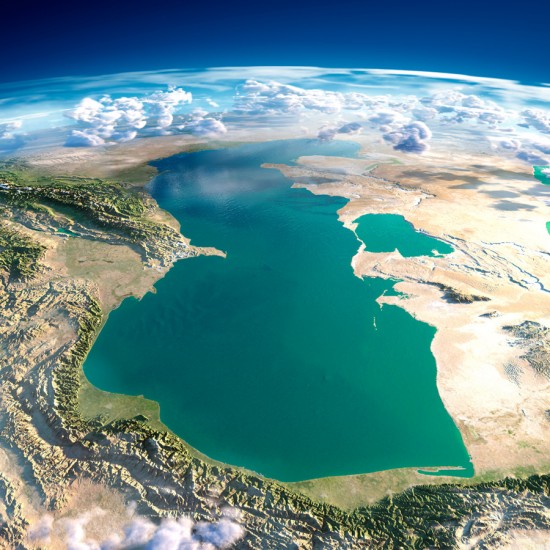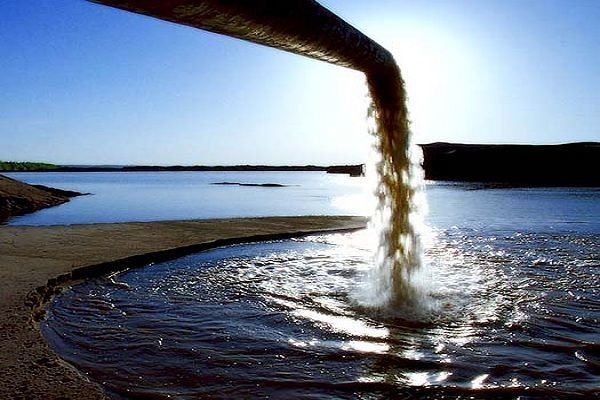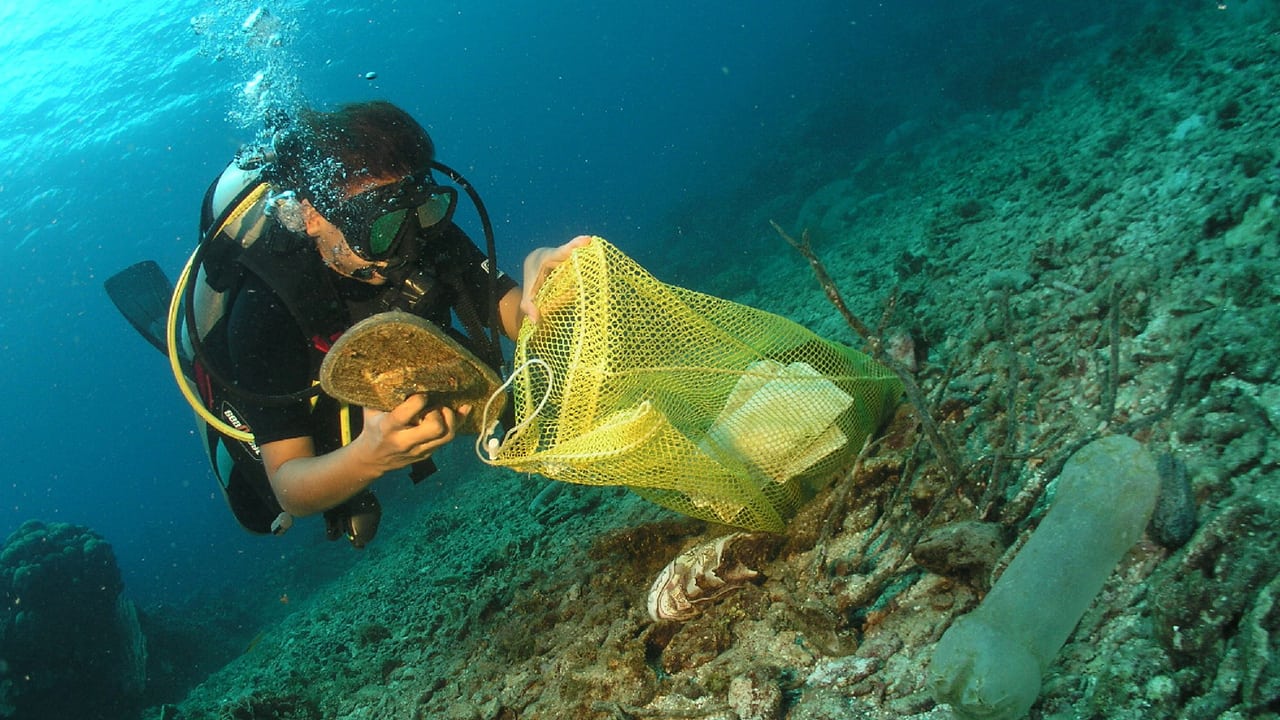ASTANA – According to forecasts by scientists, the Caspian Sea’s water level is expected to decrease by nearly four meters over the next decade. Over the past 15 years, the Kazakhstan part of the water reservoir already experienced a 7.1% decline. The sea surface area had decreased from 113.8 square kilometers in 2008 to 105.7 square kilometers in 2023. This dramatic decrease in water level and surface area caused concerns about the biological situation in the world’s largest inland body of water with no natural outlets.

The Caspian Sea. Photo credit: kapital.kz.
Causes of the Caspian Sea’s environmental deterioration
The ecological imbalance in the Caspian Sea is attributed to several factors. Following the collapse of the Soviet Union in 1991, the Caspian Sea was transformed into a key geopolitical and economic asset by developing ample oil and gas resources. This resulted in pollution from oil and gas extraction activities and river contamination from industrial waste, such as chemicals and mining contaminants. The growing population of cities near the Caspian Sea and their domestic litter have also contributed to ecological issues.

Wastewater is discharged into the Caspian Sea. Photo credit: trend.az.
These human activities coincided with shifts in the sea’s water level, which initially increased then decreased. As a result, the Caspian Sea’s environmental deterioration has been disrupted. The unique water body has been isolated from the world’s oceans for almost two million years, resulting in a distinct ecological system. The Caspian sturgeon and rare freshwater seal are two of the more than 400 indigenous species in the Caspian Sea (out of 800). The extensive river system and enormous wetland regions attract millions of migratory birds and provide habitat for various plants and fauna.
The negative impact of human activities on the Caspian Sea’s flora and fauna is evident, with declining populations of the Caspian seals, sturgeons, and other species. Weak environmental legislation, lack of proper regulation, and a legal framework among neighboring countries exacerbate these challenges.
All five Caspian littoral states – Azerbaijan, Iran, Kazakhstan, Russia, and Turkmenistan – signed the Framework Convention for the Protection of the Marine Environment of the Caspian Sea on Aug. 12, 2006. The convention aims to protect the marine environment of the sea from pollution and ensure the conservation, restoration, sustainable, and rational use of its biological resources. However, enforcing environmental regulations and fostering cooperation among the countries in the region still face challenges.
Caspian Sea Day is celebrated annually on August 12. The events usually include meetings, gatherings, and activities focused on cleaning and improving coastal areas. Despite these efforts, much progress is yet to be made in implementing ecological initiatives.
The Caspian Sea’s shallowing crisis
Significant shallowing in several directions has been observed in recent years. The issue is aggravated by the failure to consider environmental concerns during the exploration, extraction, and transportation of hydrocarbon resources into the sea. Pollutants like industrial waste, river water, untreated home sewage, trash from floating vessels, agricultural fertilizer residues, and irrigation runoff all contribute to Caspian water contamination.

Fluctuations in the sea level from 1992 to the present. Photo credit: inform.kz.
The majority of sewage flowing into the Caspian Sea originates from the Volga River (84.5% on average), the Kura River (6.1%), and the Ural River (3.1%), making them significant contributors to the pollution. Wastewater is discharged into the sea through the Volga, Kura, and Ural, from cities like Baku, Sumgayit, Makhachkala, Astrakhan, Turkmenbashi, Resht, Anzali, and others along the sea’s coast, which are among the primary sources of pollution.
Umayra Tagiyeva, the head of the National Hydrometeorology Service of the Ministry of Ecology and Natural Resources of Azerbaijan, considers fluctuations in the Caspian Sea level as a historical phenomenon. Currently, the Caspian Sea’s water level is 170 centimeters below the 1995 level but 80 centimeters above the minimum recorded in 1977. Monitoring reports indicate an ongoing decrease in the water level.
Tagiyeva warns that this trend could lead to hazardous hydrometeorological processes.
“We are already witnessing an increase in windy days, which affects the Caspian Sea’s waters. There also has been a rise in flooding in the country in recent years,” she said.
Improving the environmental situation in the Caspian Sea
All parties recognize the catastrophic situation in the Caspian Sea. However, specific measures or comprehensive policies to address this issue must be improved. The Azerbaijan side emphasizes conducting regular expeditions on the scientific research vessel to assess the ecological situation in their sector of the Caspian Sea, study biological resources, and analyze the sea’s hydrological conditions.

A diver removes debris from the bottom of the Caspian Sea. Photo credit: casp-geo.ru.
Regrettably, no steps have been taken to reduce sewage discharge or improve water purification. Sewage problems exist in the Azerbaijan portion of the Caspian Sea, and problems in rivers that run into the Caspian Sea have gotten worse. Other industries face similar issues. Despite the increased economic activity, no equivalent environmental measures have been implemented.
Attention to the Caspian Sea’s ecology has mainly centered on concerns about its shallowing. Implementing effective measures in this regard poses challenges. The sea’s water level largely depends on the volume of water in the Volga River and precipitation. Changes in rainfall distribution have been witnessed in recent years. However, 84.5% of river runoff comes from one river, and addressing climate change-related issues at a regional level is complex and requires scientific expertise.
Some experts highlight that fluctuations in the Caspian Sea are constant, and the sea’s water level may rise again in the next decade. However, no universally accepted methodology exists, and scientists propose several hypotheses.
At the government level, focusing on the sea’s ecology is seen as the only practical solution to the problem in the Caspian region. In recent years, several Caspian Sea species, including Caspian salmon, white salmon, sturgeon, sardine, and girasol, have faced threats of extinction. The Caspian seal is the only mammal in the sea and is the smallest of all the seal species globally. In the early 20th century, its population was around one million, but current estimates range from 111,000 to 360,000, with some experts considering these figures to be overestimated.
The increasing pollution in the Caspian Sea could lead to the complete degradation of flora and fauna. Pollution in the sea is the responsibility of all the Caspian littoral states. To improve the ecological situation, it is essential to limit the discharge of harmful substances into the sea, adhere to environmental protection laws, and draw insights from global experiences in this field.
The article was originally published in Kazinform.


